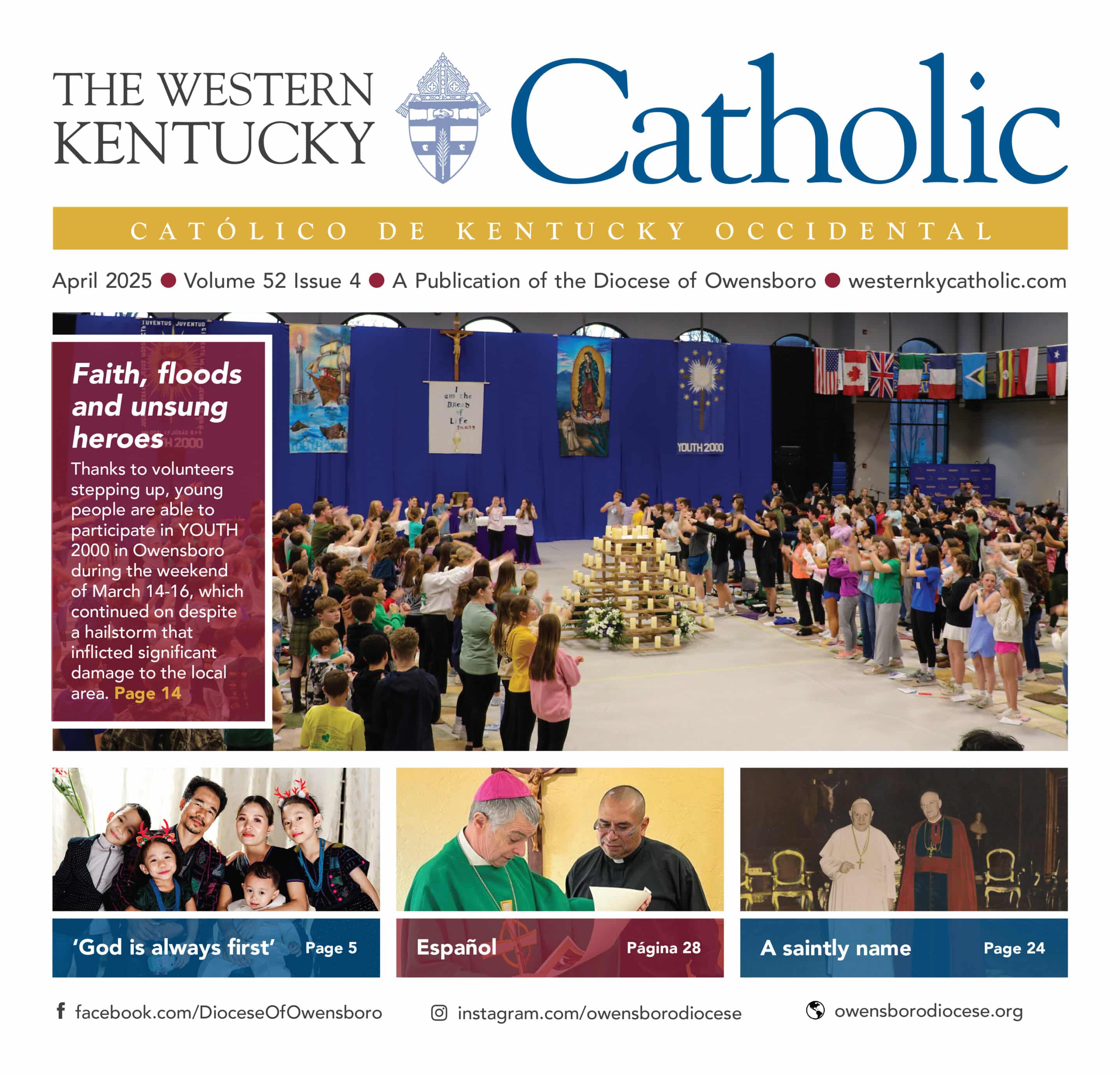
A figurine of the Christ Child is displayed in a Nativity scene at a home in Chicani, Bolivia, Dec. 7, 2020. OSV NEWS PHOTO/DAVID MERCADO, REUTERS
A Christmas message: Preferential regard for the poor
BY DCN. JAY W. VANHOOSIER, OFFICE OF FAITH FORMATION
Helpless and hungry, lowly afraid
Wrapped in the chill of mid-winter
Comes now among us
Born into poverty’s embrace, new life for the world
Who is this who lives with the lowly
Sharing their sorrows, knowing their hunger?
This is Christ, revealed to the world
In the eyes of a child, a child of the poor
(Excerpt from “Child of the Poor” by Scott Soper and William Chatterton Dix)
Readers may be familiar with this Christmas song. I personally love it because it contains one of the primary themes of the Nativity: Christ’s identification with the poor and vulnerable. Let me explain.
The lyrics “Helpless and hungry, lowly afraid, wrapped in the chill of mid-winter” depict Christ’s humble birth in a manger, surrounded by the vulnerable. These words call us to reflect on the Church’s teaching of preferential regard for the poor, a central theme in Catholic social teaching. Christ, from His birth, aligned Himself with the lowly and marginalized, setting a profound example of solidarity with the poor and suffering.
The phrase “born into poverty’s embrace” highlights the circumstances of Christ’s birth. He was not born into wealth or comfort but into the heart of human suffering and need. This choice by God is not accidental but intentional, underscoring that His presence is most powerfully felt among the lowly. Catholics are called to see Christ in the poor and to treat them with the dignity and respect due to every child of God.
This preferential option for the poor is deeply rooted in divine solidarity. Christ comes among us not in grandeur but as one who shares in the everyday struggles of the marginalized. His life was filled with encounters where He healed the sick, fed the hungry, and comforted the sorrowful. These actions reveal His deep connection with the poor, challenging us to do the same. We are called not to pity the poor but to see them as our brothers and sisters deserving of love and care.
The lyrics continue, asking, “Who is this who lives with the lowly, sharing their sorrows, knowing their hunger?” This rhetorical question captures the essence of Christ’s mission. He did not merely sympathize with the poor; He shared in their sufferings and vulnerabilities. Christ experienced the same struggles many endure daily, showing He was not a distant savior but one who walked alongside those He came to save.
As Christians, we are called to imitate this radical solidarity. The preferential option for the poor is not merely an act of charity but a recognition of the inherent dignity of every person, especially the poor. To follow Christ is to “live with the lowly,” sharing their struggles and advocating for justice. This solidarity with the marginalized is central to the Gospel message.
The lyrics conclude with, “This is Christ, revealed to the world in the eyes of a child, a child of the poor.” Christ’s identity is most fully revealed in the vulnerable and marginalized. The child born in Bethlehem reflects all the children of the poor, whose innocence and vulnerability demand our care and protection. To serve them is to serve Christ.
This call to serve the poor is not optional; it lies at the heart of the Gospel. True greatness is found not in wealth or power but in humility and service. In caring for the least among us, we care for Christ Himself. May we, like Christ, embrace the poor and bring new life to the world through love and compassion for the marginalized.
Dcn. Jay W. VanHoosier is the Director of Faith Formation for the Diocese of Owensboro. For more information visit owensborodiocese.org/faith-formation, email [email protected] or call (270) 852-8324.
Originally printed in the December 2024 issue of The Western Kentucky Catholic.

